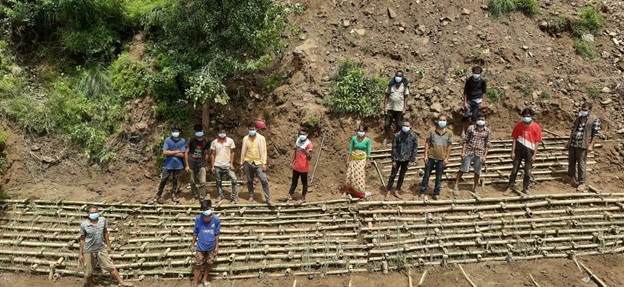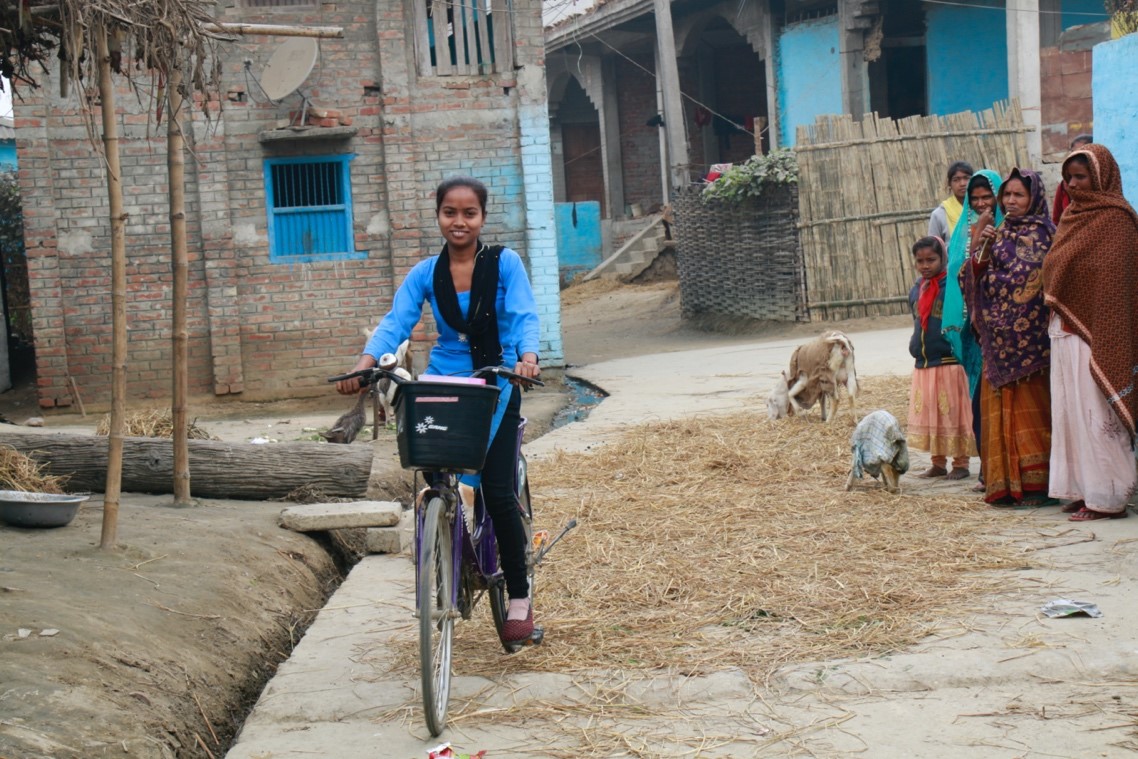Using bamboos for slope stabilization

Eco-friendly technology helps rural communities mitigate landslides
During the onset of the monsoon every year, Urmila Dhakal starts counting the days until the end of the monsoon. It is not because she dislikes the rain, it is because the monsoon ushers in landslides that damage properties and livelihoods every year in the Nauli village of Rakam Karnali, Athabish Municipality in Dailekh.
“Landslides are common in our village during the monsoon season. Every year we (villagers) are shifting our cattle to safer places as the area is highly vulnerable to landslides and we ourselves are fearful of our lives,” says Urmila. “There was a huge landslide last year which washed away our land completely. These localized shocks have a huge impact on the lives of the vulnerable households of the rural communities with loss of property and even human casualties.”
To address these challenges, the USAID BHAKARI program implemented by Mercy Corps Nepal aims to build resilient and aware communities that are able to cope with localized shocks and stressors such as landslides, floods, and fire. The program has initiated simple yet innovative technologies of bamboo crib walls, watteling, brush layering and fascine - all eco-friendly and sustainable soil bioengineering landslide mitigation techniques.
To mitigate landslides in Aathbise in Dailekh district, a bamboo crib wall was built with locally available materials of only bamboo and soil and is an effective method to mitigate landslides. Twenty houses, three hectares of agricultural land, and an irrigation canal providing water to nearly 1.5 hectares of land are now safe due to the construction of the bamboo crib wall. The bamboo wall will minimize the risks of landslides and directly benefit the households of the community.
Tara Kumari B.K., local resident and social mobilizer at Athabish Municipality, informed that government officials as well as locals, despite being a bit skeptical initially, have well-accepted the innovative bamboo crib walls as they are using locally available materials at a low cost. She further said that she has seen remarkable progress in mitigating landslides caused by heavy monsoon rain which has ultimately saved lives and property.
Engineer Tara Prasad Karki of Mercy Corps’ implementing partner in Dailekh district said that the bamboo crib wall is economical and eco-friendly as it uses local materials and is easy to construct. “The conventional retaining structures made of gabion and concrete are relatively rigid and are not suitable for slopes with larger displacements or on creeping landslides. Moreover, most of these methods are proving to be fatal to the environment. The conventional retaining structure would add a surcharge load on the slope if they were not removed on time which would further increase instability,” explained Karki. Bamboo is environmentally friendly as the dead bamboo stalks will decompose after a few years and will turn into manure. “When we first forwarded the idea of using bamboo, locals were a bit apprehensive as this technology was never seen and heard of. But with time, they have believed that using bamboo is cost-effective, efficient and the best to control social erosion and slope stabilization.”
“I didn’t know we could build such walls with only bamboo. We have now built a similar wall near my house. I feel a lot safer now,” says Urmila with a sigh of relief. “We learned this innovative technique where we can build such walls in high-risk areas in our communities to mitigate landslides to save lives and property of the locals in the area,” added Urmila, who is also the newly appointed Coordinator of the Community Disaster Management Committee (CDMC).
BHAKARI has established Community
Disaster Management Committees in all 252 of its working communities as part of
its objective to mitigate, prepare and respond to localized disasters
accordingly. “I am also coordinating to disseminate timely messages on
potential disasters and their mitigation measures to locals,” says Urmila
adding, “Before we were at the mercy of nature, but now I feel me and my
community is safe as we can take the necessary measures to mitigate the
challenges.”


